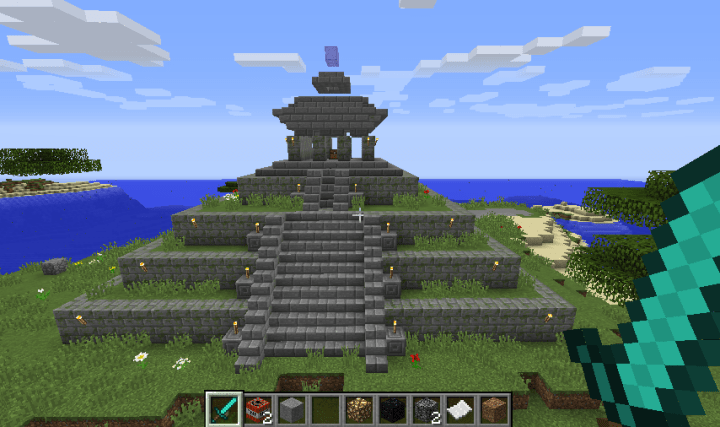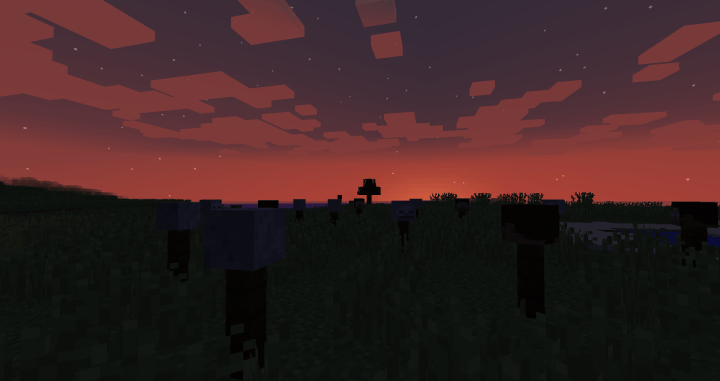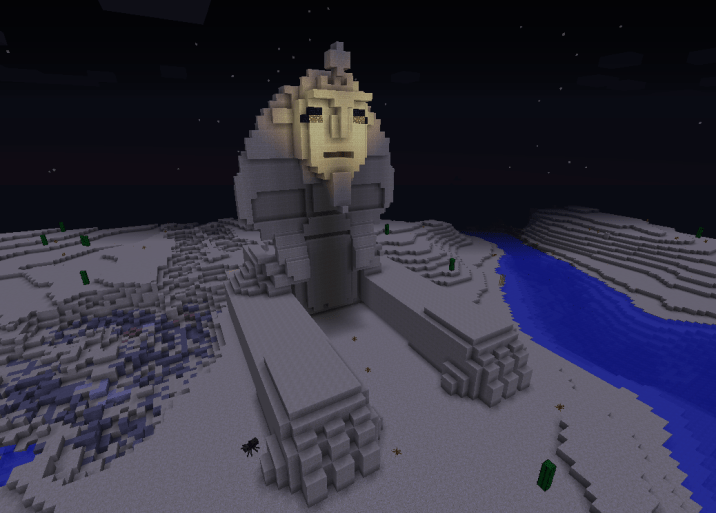 Minecraft is a game that has received a lot of attention for its use as an educational tool. The game has mostly been used in K-12 classrooms, but there are many possibilities for its application in higher education.
Minecraft is a game that has received a lot of attention for its use as an educational tool. The game has mostly been used in K-12 classrooms, but there are many possibilities for its application in higher education.
Minecraft is an open-world sandbox video game where players explore, craft, gather resources, build, and survive in a natural setting. The game includes minimal elements of combat and has a rating of “Everyone 10+” by the ESRB (the Entertainment Software Rating Board). Since the game has no direct goal, and players may choose to play in a variety of ways, I view Minecraft as an ideal choice for integrating into a writing class.
In the video game-based composition class I taught, Minecraft was used as a text for the rhetorical analysis of traditional elements (audience, purpose, context, etc.). The possibilities presented by such a game can translate into many exercises involving audience and discourse analysis. As Shaffer, Williamson, Squire, Halverson, and Gee state, “as a form, games encourage exploration, personalized meaning-making, individual expression, and playful experimentation with social boundaries” (110).
My students not only analyzed how they used and played the game, but were encouraged to consider the following questions in the game’s context: How was Minecraft advertised upon its release? How did your play of the game reinforce or challenge the expectations that the advertisements produced? What can a game tell us about authorship and audience? What can Minecraft tell you about video game players? Does Minecraft tell you anything about gaming culture? Is Minecraft a violent game? In what ways did you create an identity in game? How did your interactions in game with other players shape your identity? How did your faction/group use language to communicate? How did your faction/group attempt to interact and persuade individuals who were not members of your group?
One of the rhetorically significant features of the game is that players can type in-game to communicate with one another. This presents a unique rhetorical situation for analysis. Using a specific mod, in-game chat can be logged for later access. The in-game chat can be beneficial in terms of studying the use and development of “gamer speak” and its relationship to discourse communities and identity.
Minecraft provides interesting visual spaces for analysis as well. Players may create virtually anything they can think of from simple huts for protection to castles, windmills, and monuments from antiquity. The creative possibilities alone provide players with a level of agency unavailable in many video games and provide flexibility for educators. Students can literally construct visual meaning from pixelated blocks.

Players can also alter the appearance of their avatars. You might recognize the skins of the avatars above image as Batman and Robin. Several free websites (such as minecraftskins.com) exist that allow players to design their own custom avatar skins or to select from a variety of preexisting designs. I view this as a perk from an educational standpoint. My students were able to emphasize their personalities and to reinvent themselves within a game because they had the opportunity to create their own avatars. In perhaps a small way, this opportunity is empowering. Students who chose the stock avatar and never changed it revealed just as much as the students who did elect for personalized avatars.

Video games can be an excellent tool in the composition classroom for many reasons, but I see Minecraft as being especially powerful because the game serves as a relatively safe and entry-level example for complex discussions and critical analysis. Not that “safe” examples are always ideal, but I believe Minecraft made it easier for my students to enter into discussions on topics such as sexism and violence in video games and gaming culture (key components of this particular class). One such conversation stemmed from the pixelated graphics of the game and whether or not swinging a sword at another player in Minecraft was as violent as the acts in Grand Theft Auto V. More importantly, video games, their designs and principles, provide relevant rhetorical texts for reflection in a composition class.
Playing a carefully selected video game in a composition class can lead to a rich reservoir for analysis, critique, and play suitable for the engagement in active critical thinking, reading, and questioning expected at the college level.
–
Shaffer, David Williamson, Kurt R. Squire, Richard Halverson, and James P. Gee. “Video Games and the Future of Learning.” The Phi Delta Kappan, 87.2 (Oct. 2005): 104-11. JSTOR.


